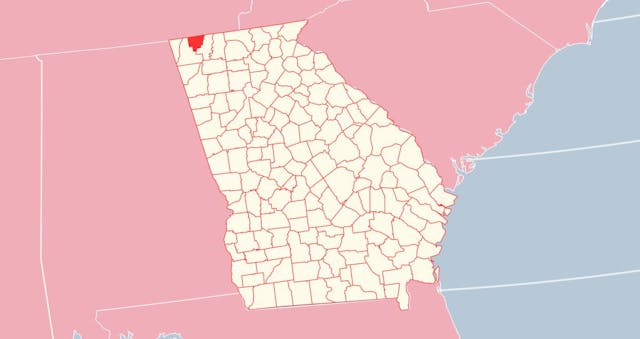Rehabs in Catoosa
Catoosa County is located in northwest Georgia, United States. It was created on December 5, 1853. Ringgold is its seat and one of the most populous cities.
The county is home to about 70,000 residents. Its community is constantly thriving, having many public schools and high quality of life. It is evident in the number of addicts in the county. The thing is that Catoosa, compared to other counties, has a low rate of substance abuse. The overdose rate is 3 people per 100,000 residents. Even so, the community is not satisfied with these results and they try to eliminate the issue as much as possible. Rehabs in Catoosa County take appropriate measures to serve this purpose.
Rehab Programs and Their Types
Drug abuse has an influence on our society on many levels. It can reach every community and family. For that, you should choose a program that meets your individual needs.
Inpatient and Outpatient Rehab
When starting rehab treatment, there are two primary options: outpatient and inpatient.
For people who live alone and who have a higher level of addiction, inpatient rehab is more favorable. It assumes staying in medical centers 24/7. Different procedures help to get rid of harmful substances from the body. It contributes to the well-being of the patient. Medical facilities and their staff create a convenient environment to focus on treatment. Inpatient programs include all stages of medical care. The duration depends on the individual. On average, it lasts between 28 to 90 days. Family members can also be involved if they want to.
Outpatient is for individuals who have milder addiction levels. Its best part is time flexibility. The patient can continue his/her everyday routine and has to visit the center only from 10 to 12 hours weekly. The duration goes around 3-12 months. The program involves detoxification, therapies, and other necessary procedures. It comes in the form of partial hospitalization, intensive, or standard models. During this type of treatment, family support is essential. The patient's consistency will help to make the process more effective. Several groups are also used for efficiency and moral support.
Aftercare and Relapse
Unfortunately, after leaving the rehab, the treatment is no longer finished. During the first 90 days, there is a high risk of relapses. Many factors such as triggers, stress, and cravings can be crucial. Here aftercare comes to help including therapies, sessions, meetings, and other procedures to finally bring the patient to his/her daily life.
Family and friend support is, of course, important but the former patient’s experience is more vital. They have already overcome the difficulties that they faced. Within the framework of the alumni plan, individuals exchange their methods with new sobers and help them to cope with it.
Fees and Payment Options
In general, addiction treatment is expensive. It includes the fees for settings, medicine, professional assistance, and medicine. The more services you need, the more you will need to pay.
If you cannot pay, private health insurance may cover the fees. Medicaid and Medicare can also be helpful provided that you check it with them in advance.
Forcing a Teen Into Rehab
Parents of addicted teens have many questions. Is the situation so bad? What did I do wrong to witness this? How long has my child been using drugs? These questions are endless. In reality, parents can receive answers to their questions only after becoming friends with their minors.
After that, it will be possible to explain the negative sides of addiction. If the conversation goes further, one can also start talking about the advantages of rehab.
If a child refuses treatment, a simple talk might help. However, if he/she opposes for several days, it is time to ask for a specialist’s help. They have much experience dealing with such cases.

